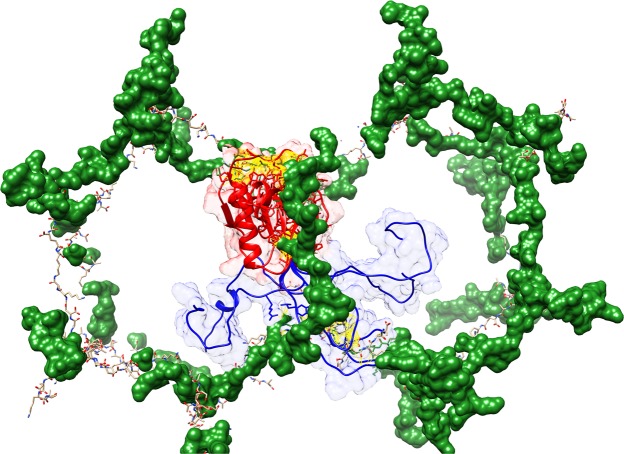Figure 9.
Model of Ts2631 endolysin binding to peptidoglycan. The Ts2631 endolysin consist two major parts: the structural part with catalytic residues (in red) and flexible N-terminal extension (in blue). Both parts are essential for peptidoglycan (in green) binding (the possible contacts are marked in yellow). While structural part is responsible for lysis of peptidoglycan (coordinated by Zn2+ and water molecule and highly conserved catalytic triad), the N-terminal extension can adopt multiple conformations with putative contacts with peptidoglycan far away from the main body of the enzyme (the alternate conformers of the N-terminal extension had been built using Modeller software with DOPE potential)21,22.

